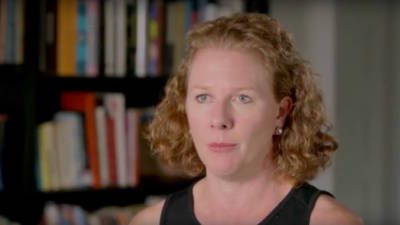Sometimes the most ambitious and motivated student can be a poor standardized test taker.
If you’re a hard-working, high-achieving student with test scores that don’t reflect your abilities, there’s no reason to give up hope of attending your dream school. Rather than try to hide your low test scores, Kristen Moon, founder of Moon Prep, recommends putting your energy into promoting other parts of your application. In particular, she works with students to highlight extracurriculars in unique and innovative ways to attract colleges’ attention to the areas where the applicant does excel. If you have lower-than-ideal test scores but impressive extracurriculars, here’s how to make your application shine.
1. Character Limits Aren’t the Limit
Moon says that step one to showcasing your extracurriculars is to be sure they’re included with your application. “The Common Application only allows students to put 10 activities in the activity section, with short character counts for each,” she says. “For some students, this isn’t enough space to fully detail their leadership and accomplishments.” If your goal is to sell yourself through your extracurriculars, you need more room to shine. The solution? A student résumé. Moon has successfully worked with students to go beyond their applications’ character limits and create full résumés that demonstrate their diverse interests and accomplishments.
High school counselor Nikki Specht has had similar success using a résumé to showcase a student’s extracurriculars. She advises using numbers wherever possible to highlight and quantify your achievements—an example would be including the dollar amount raised for a charity—and starting activity descriptions with action verbs that pack a punch. Specht also recommends leveraging your student résumé as a supplement to your academic interests. “If you’re applying for premed or biology, for example, it helps to do things like volunteer at a local hospital or join the science club at school,” she explains. Use the résumé to “show the school that you are passionate about your major of choice and you intend on pursuing it.”
2. Go Digital
With some students, Moon goes even further by recommending they create a LinkedIn® profile to capture their extracurriculars. Students can link to it from the application’s additional information section or their résumé. “While most people might assume that a LinkedIn profile is only useful for students who are about to graduate a university to find a job, it can be an excellent tool for young students as well.”
One of Moon’s top tips for using a LinkedIn account effectively is to put a student’s interests and goals directly into the headline—and keep it short so people grasp who you are at a glance. For example, one of her students used the headline “Student, Researcher and Pianist.” According to Moon, details can make all the difference. “Create a customizable LinkedIn URL, which makes it easy for people to find you, and add a professional headshot to help create a strong first impression.”
Another important element of creating a profile is the summary, which offers an opportunity to present your ambitions in ways you can’t in a paper résumé. Again, Moon says to keep it succinct while also using language that’s very specific. She offers this example: “An aspiring physician interested in pediatrics and research committed to academic excellence and hands-on learning experiences, including job shadowing a pediatrician, leading the STEM team, tutoring students, and playing the piano.”
3. Putting the “Extra” In Your Extracurriculars
Terry Mady-Grove, founder of Charted University Consulting, urges her students to expand their activities beyond what’s offered by their school. “Many students think that the only extracurriculars available are the structured ones that a high school offers. This is not the case.” Mady-Grove doesn’t mean that students should learn to speak extinct languages or feign interest in esoteric hobbies—rather, the objective is to identify your interests and pursue them outside of the typical high school channels. She offers this example: “One of my students was a singer in several groups in school. I suggested that she gather together other students that liked to sing from inside and outside her high school and then perform in nursing homes. This demonstrated skills that went quite beyond her singing talent, such as organization, leadership, and social skills.” Mady-Grove reports that the response from the nursing homes was wonderful, the students learned valuable skills and it was an unusual addition to this student’s college application.
What’s more, says Mady-Grove, including audiovisual of your outside-the-box extracurriculars (e.g., a performance recording, link to local news coverage of your community work) can meaningfully enhance your application. Depending on the school’s application process, students can either include these materials in their applicant portal in the additional information section or they can send them directly to the admissions office.
Test scores can be an important component of a college application, but there are other important factors, too. Admissions officers want your application to demonstrate who you are and how you’d contribute to their campus. Highlighting your extracurriculars in creative, engaging ways puts more of you into your application, and ultimately, being yourself is the best thing you can do to match with a school that’s a good fit.
LinkedIn® is a registered trademark of LinkedIn Corporation and its affiliates in the United States and/or other countries.




